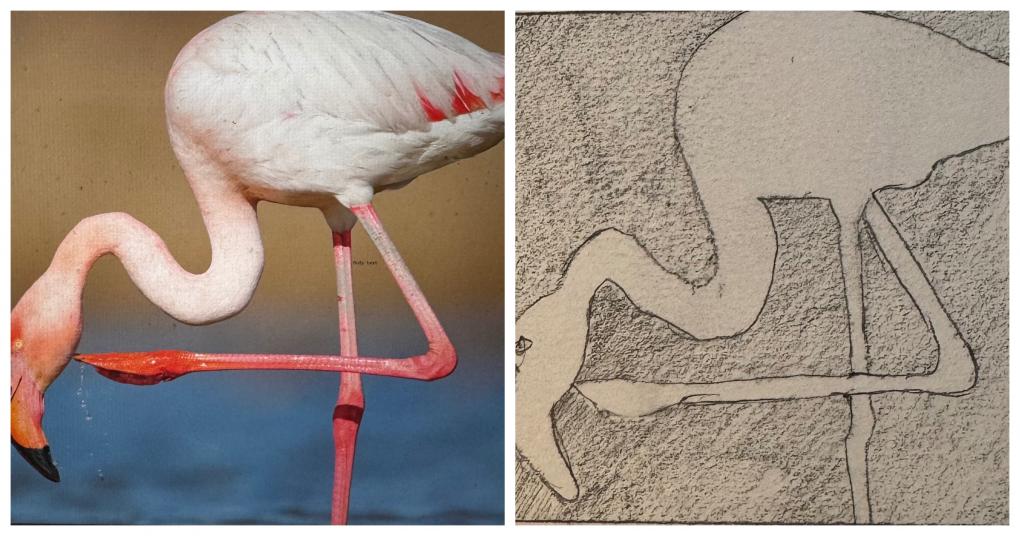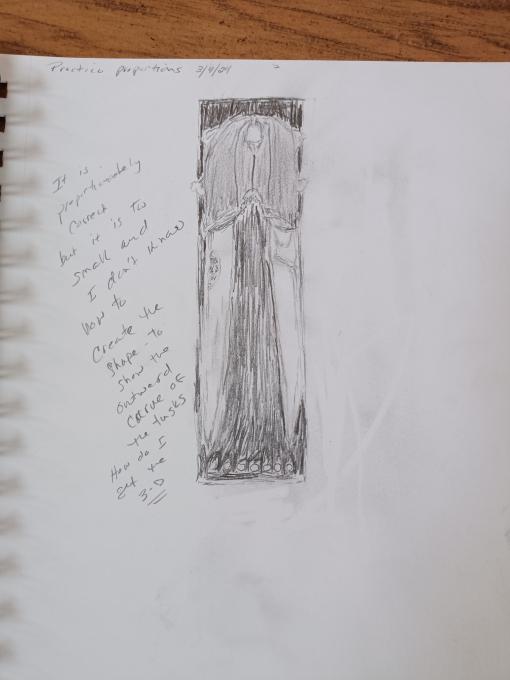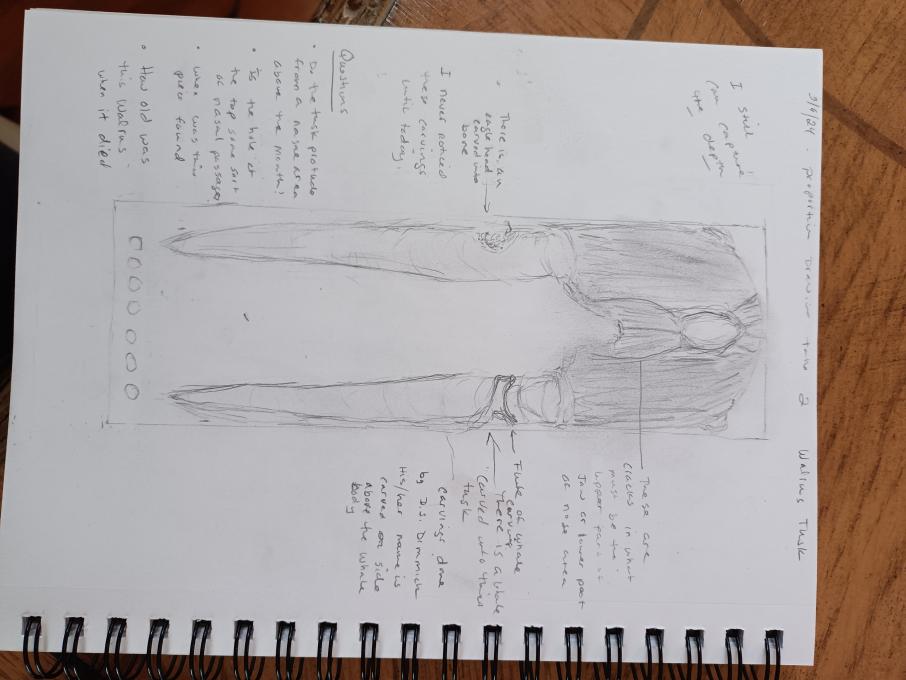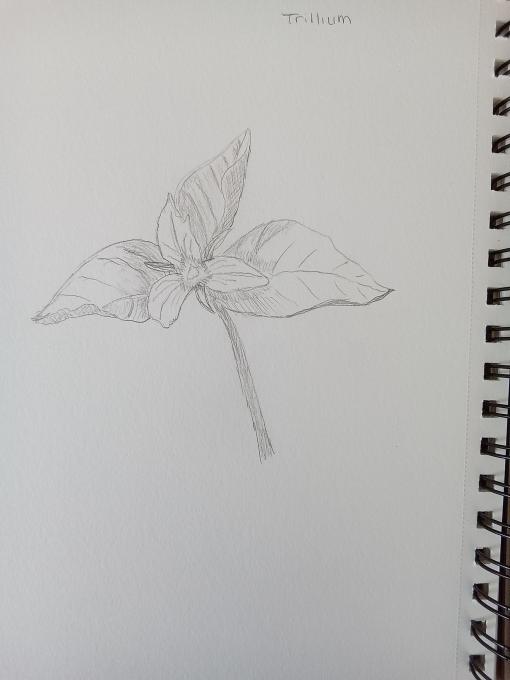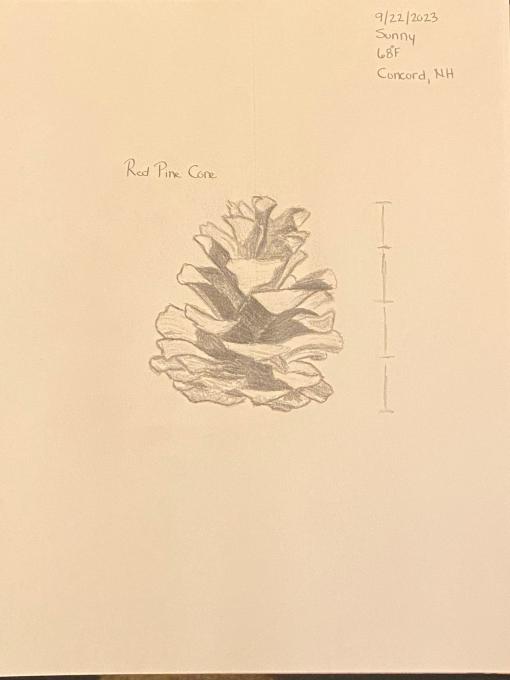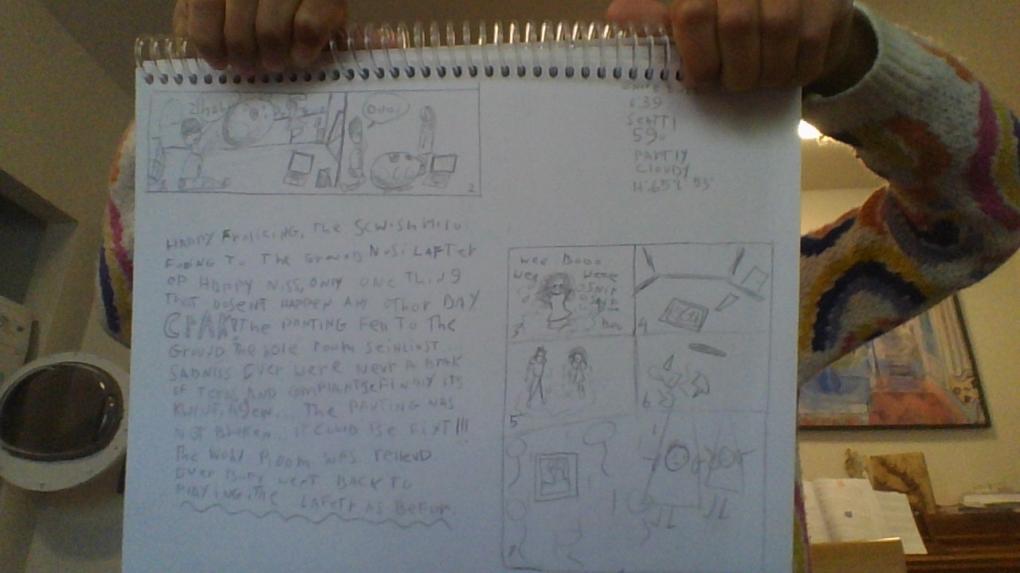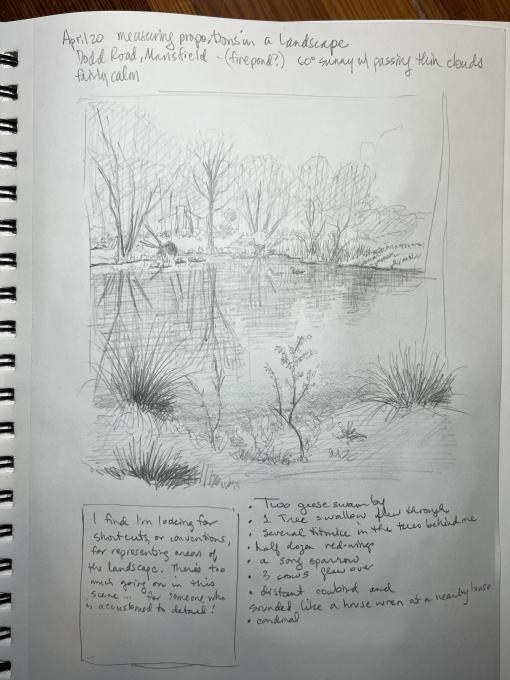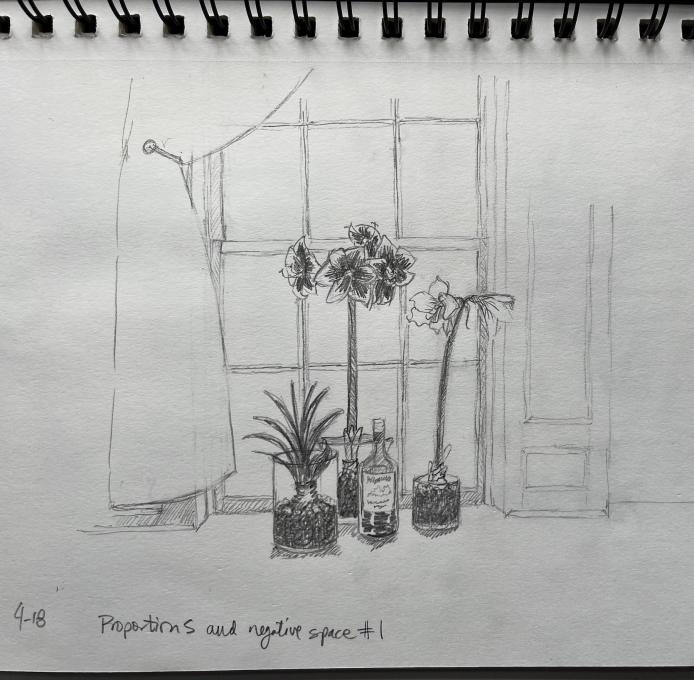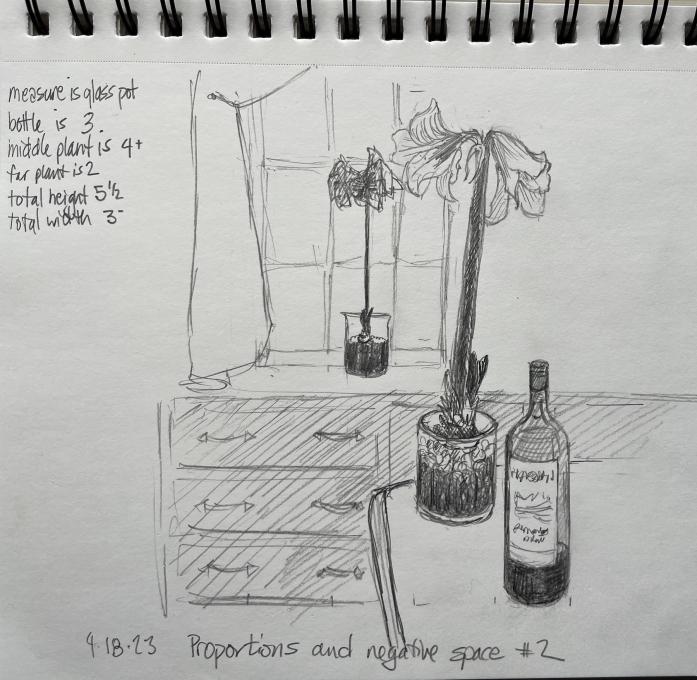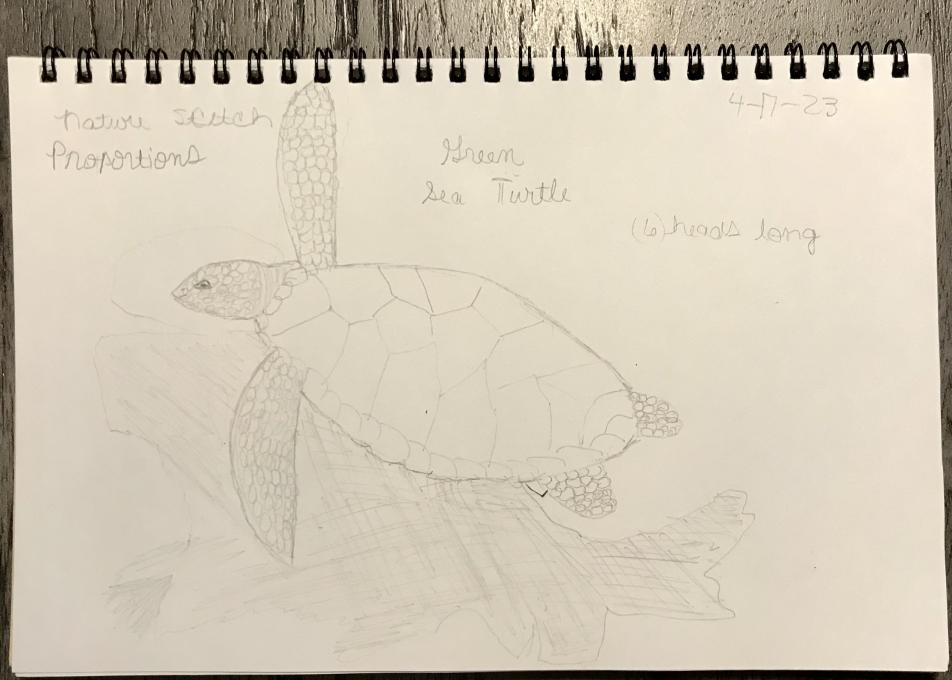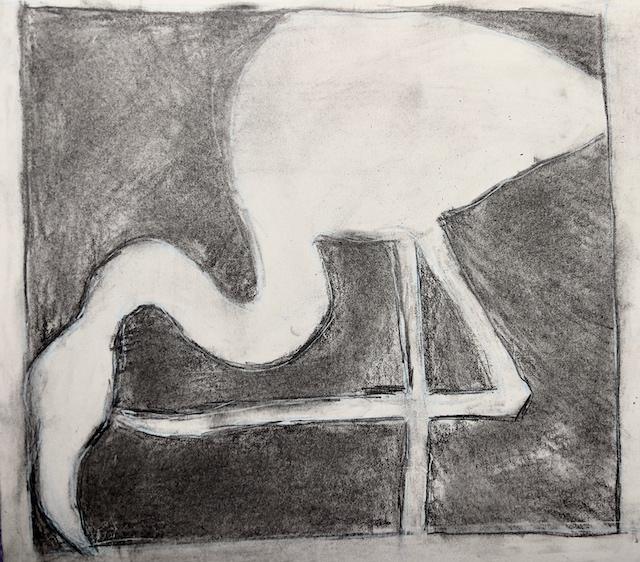The Cornell Lab Bird Academy › Discussion Groups › Nature Journaling and Field Sketching › Getting the Proportions Right
-
Bird AcademyBird AcademyWhat are your thoughts on measuring proportion in the field? Is this technique helping you capture your subjects more accurately? Do you find that proportion is easier to measure on some subjects as compared to others?You must be enrolled in the course to reply to this topic.
-

-

-

-
This exercise was very useful because, alongside the one about negative space, it made me a lot more conscious of the distance between objects and between different parts of the same object. I did apply the logic of using a part of the subject (e.g. the head of a bird) as my unit of reference to establish proportions of the other parts (e.g. the body of the bird), but it was never a systematic approach, just an intuitive one. The exercise with the negative space was really valuable, and even in this poinsettia drawing, it helped me realise that I was on my way to overlapping two leaves, while in fact there was a very small space between them. I hope I can incorporate this attention to negative space in my drawing practice on a regular basis. PS. Apologies for the (very!) poor quality of the photo

-
This was a very helpful exercise. I was able to really focus on the shape of the leaves and flower, and draw the curve of the leaves with an eye on negative space. Will try this with more leaves....once we have some this spring!!
-
 I practiced with my indoor orchid. I found the measurement tip and taking into account the negative space very useful.
I practiced with my indoor orchid. I found the measurement tip and taking into account the negative space very useful. -
Measuring proportions in the field was very helpful! I was able to figure out the length of the stem and leaves based on the length of the flowers.

-
 Measuring proportions and negative space are already familiar techniques. I find measuring the angles useful as well. These were fun to practice because I haven't drawn in decades. It's almost midnight and pitch dark. I will try these techniques tomorrow in the garden.
Measuring proportions and negative space are already familiar techniques. I find measuring the angles useful as well. These were fun to practice because I haven't drawn in decades. It's almost midnight and pitch dark. I will try these techniques tomorrow in the garden.
-

-
The daisy is very beautiful. I like how you captured the pollen and minor details of the flower. I also like how you left the measurements on the drawing!
-
-
 Measuring was okay, but executing on paper was not so easy.
Measuring was okay, but executing on paper was not so easy.
 A patch of zinnias from my back yard.
A patch of zinnias from my back yard. -
I confess that I did not draw anything outside. We have had non-stop weather in the ninties it seems like forever, so I took a picture from my vacation and used negative space and proportion to draw a Great Blue Heron. The thinking about negative space helped me to get negative space much better and the measuring (I used the length of the bill) totally helped to make it look more like the bird I was drawing. I am proud of this drawing. Thank you!

-
When I measure proportions, I always compare the angles of different lines. This is because I find that I can't get the proportions right if I concentrate on the details of the object. Focusing on the angles of the different lines gives me a general idea of the subject. This technique helps me to focus on the length and proportions of each subject. It also helps me to compare the distance, size and position of each object.
-
This tecnique is very helpful in creating more realistic drawings. The proportions for complex images, such as a landscape, was a bit more difficult than single objects at first.
-

-
Although I find it tricky, it is definitely helpful when figuring out how to capture images on the page more accurately. The weather is not conducive to getting outside to do this in the field, so I am stuck with objects in the house for now. I’m hoping to get out tomorrow. The easy part if getting the measurement at the top; the hard part is moving the pencil down to count out the size. This was tricky for a stationary object. I can’t imagine what it will be like with one that jumps around. In doing this assignment, I definitely found my observation skills improving. I drew walrus tusks that have been hanging on my wall for approximately 8 years and I never realized there were carvings on the sides before. If I get outside tomorrow, I will comment on the measurements of various subjects.



-
The walrus tusks were a good thing to practice measuring accuracy. Nice that you shared the original picture too. You really showed the contrast of the ivory on the tusks realistically. Very unique.
-
-
What is that ruler you were using? I like the idea of having it when I’m up close and able to measure for identification.
-

-
On a still subject measuring proportions worked very well. I always try to capture photos of my subject because I know I'm not quick enough to get all of the details before they move, so I started small. I think the proportions of this pine cone were helped with the measuring trick.

-

-
April 20, 2023. Here's my field sketch using the extended arm measuring tool. My learning note wasn't about proportion so much as about finding a way to simplify a landscape - I'm accustomed to putting in detail, and there was just too much going on here. I tried squinting, to pull out the lights and darks, but ultimately decided the light was pretty uniform. Onward!

-
April 18, 2023 - was chilly out today, so I wimped-out and sketched indoors. My still life was fun to arrange, with the objects adjacent to each other and then quite separated. I usually try to capture these positional relationships by eye, but the brain plays tricks and I found the measuring exercise very helpful. And the negative space awareness also helped get things positioned on the page. I think it will be a challenge to practice this in the field - but I'll give a landscape a try.


-
I like how you moved the objects around to show a difference in the proportions of each object
-
-
I Think that using this method really does help a lot with making the picture look proportionate. I know before I always had a problem with making it look realistic and I think that this is going to be a big help.

-
-
<li style="list-style-type: none;">
- <li style="text-align: center;">

-
I tried to measure the bird from the edge of it to the edge of the square. I then used a 'no copy blue pencil' for the birds out line. The last item was filling in the negative space. I should have just sketched the negative space and erased what did not work. I will try this again.
-
-
I tend to forget to check on the negative space as I am drawing. It will be a habit to develop, because it does help in accuracy when I use it.
Read More:




 I practiced with my indoor orchid. I found the measurement tip and taking into account the negative space very useful.
I practiced with my indoor orchid. I found the measurement tip and taking into account the negative space very useful. 
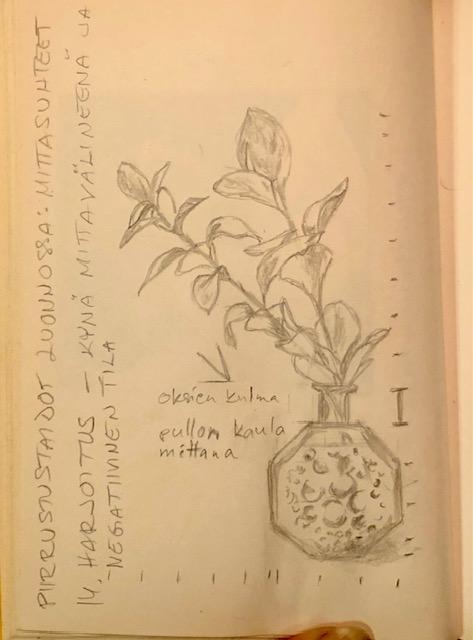 Measuring proportions and negative space are already familiar techniques. I find measuring the angles useful as well. These were fun to practice because I haven't drawn in decades. It's almost midnight and pitch dark. I will try these techniques tomorrow in the garden.
Measuring proportions and negative space are already familiar techniques. I find measuring the angles useful as well. These were fun to practice because I haven't drawn in decades. It's almost midnight and pitch dark. I will try these techniques tomorrow in the garden.

 Measuring was okay, but executing on paper was not so easy.
Measuring was okay, but executing on paper was not so easy.
 A patch of zinnias from my back yard.
A patch of zinnias from my back yard. 
